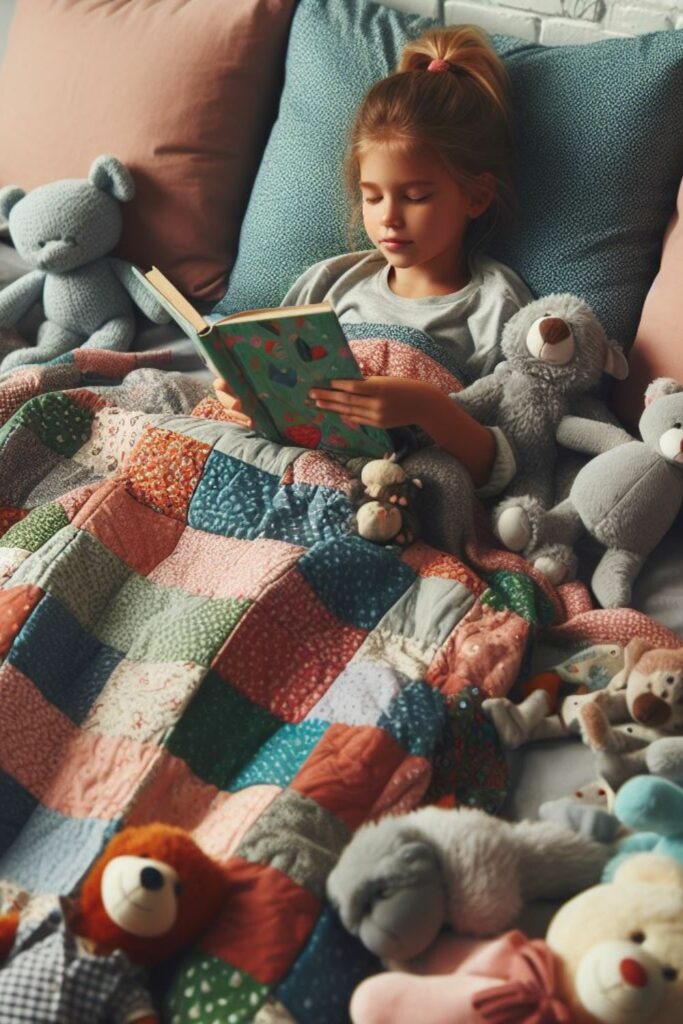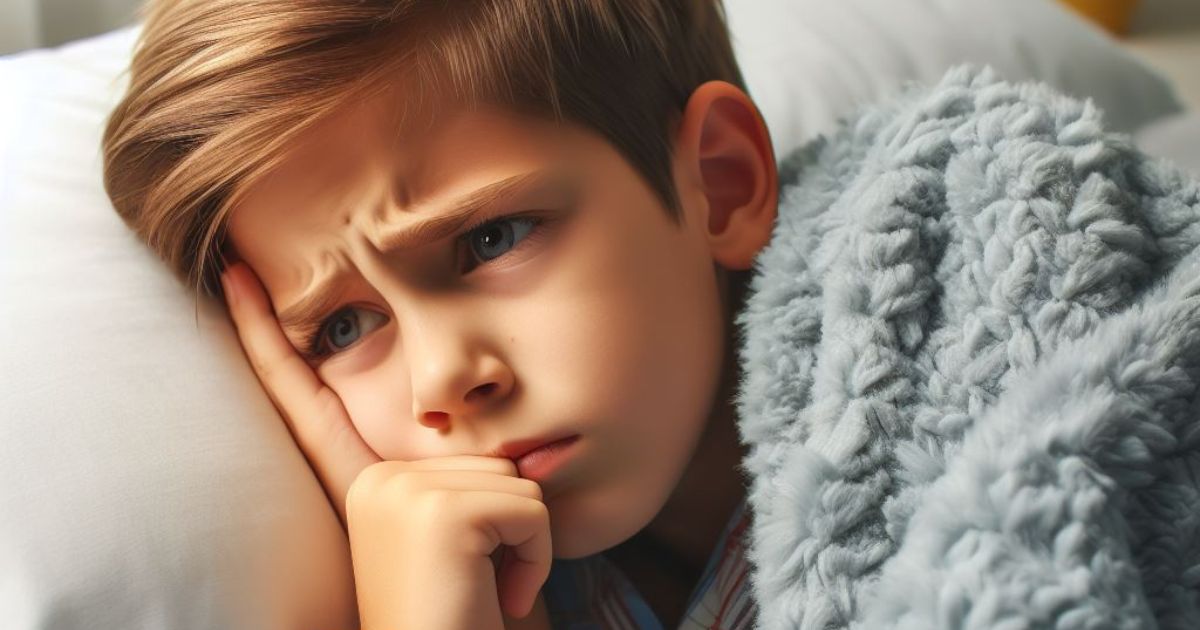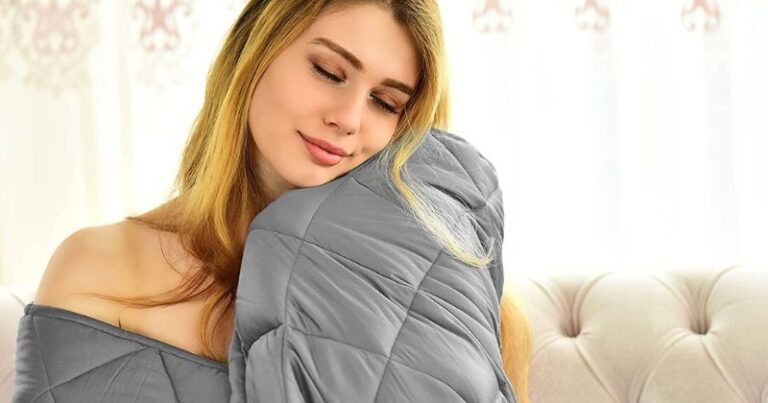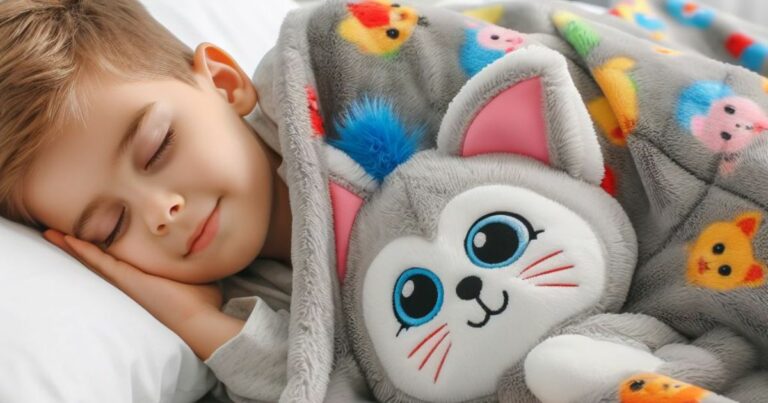Exploring the benefits of weighted blankets for autism: Autism is a neurodevelopmental disorder that affects individuals in unique ways, often resulting in difficulties with communication, social interaction, and sensory processing. As researchers continue to explore non-pharmacological interventions to support individuals with autism, weighted blankets have emerged as a potential tool to address some of the challenges associated with the condition. These specialized blankets provide deep pressure stimulation, which has been found to have a calming effect on the nervous system.
In this article, we’ll delve into the potential benefits of weighted blankets for individuals on the autism spectrum, including how they can promote relaxation, reduce anxiety, enhance sleep quality, and aid in sensory integration. Join us as we navigate the world of weighted blankets and their potential impact on individuals with autism, providing insights into how these comforting blankets may contribute to improved well-being and overall sensory regulation.
Understanding Autism and Sensory Needs

Autism spectrum disorder (ASD) is a complex neurodevelopmental condition that affects individuals in various ways. One common thread among people with autism is sensory processing challenges. These challenges can lead to hypersensitivity or hyposensitivity to sensory stimuli, making everyday life a bit more challenging.
Here’s one of my favorite weighted blankets
How Weighted Blankets Work
Before we delve into the benefits, let’s understand the magic behind weighted blankets. These blankets are designed to provide deep pressure stimulation, a sensory input that has a calming effect on the nervous system. Unlike regular blankets, they contain evenly distributed weight, creating a gentle, hugging sensation.
- Weighted blankets work by providing deep pressure stimulation to the body. These specialized blankets are filled with small, evenly distributed weights, such as glass beads or plastic pellets. When the blanket is draped over the body, the weight applies gentle pressure to the skin, muscles, and joints. This pressure stimulates the proprioceptive system, which is responsible for detecting the body’s position and movement in space.
- The proprioceptive system plays a crucial role in sensory integration, helping individuals regulate their responses to sensory input. The deep pressure provided by weighted blankets has been found to have a calming effect on the nervous system by activating the parasympathetic nervous system, which promotes relaxation.
- This can lead to a range of benefits, including reduced anxiety, improved sleep quality, enhanced focus, and increased feelings of comfort and security. By harnessing the power of deep pressure stimulation, weighted blankets offer an innovative approach to supporting sensory regulation and promoting overall well-being.
Benefits of Weighted Blankets for Autism

1. Improved Sleep Patterns
Sleep issues are a common struggle for individuals with autism. Weighted blankets can work wonders here. The gentle, consistent pressure they provide helps in improving sleep quality. Research has shown that individuals who use weighted blankets often experience more restful nights.
2. Reduction in Anxiety and Stress
Anxiety is a constant companion for many individuals with autism. Weighted blankets offer a sense of security and comfort, leading to a noticeable reduction in anxiety and stress levels. It’s like getting a warm, reassuring hug whenever needed.
3. Enhanced Focus and Attention
For those with attention difficulties, weighted blankets can act as a secret weapon. The sensory input they provide helps individuals focus better, whether it’s during schoolwork or other tasks. It’s like having a sensory anchor in a world that can sometimes feel overwhelming.
4. Calming Effect during Meltdowns
Meltdowns are challenging for both individuals with autism and their caregivers. Weighted blankets can play a crucial role in soothing and comforting during these episodes. They act as a safe haven, providing the necessary sensory input to help regain composure.
Choosing the Right Weighted Blanket
1. Determining the Appropriate Weight
Selecting the right weight for a weighted blanket is crucial. As a rule of thumb, the blanket should be around 10% of the individual’s body weight, plus a pound or two. This ensures the therapeutic effect without feeling too heavy.
2. Fabric and Material Options
When it comes to the fabric of the blanket, it’s important to consider individual preferences. Some may prefer the softness of cotton, while others might find the coziness of flannel more appealing. It’s all about what feels most comfortable.
Using Weighted Blankets Safely

1. Age and Weight Recommendations
Always follow age and weight recommendations when using weighted blankets, especially for children. Safety should be a top priority. Keep in mind that weighted blankets are not suitable for infants.
2. Monitoring and Supervision
Supervision is essential, especially for those who may not be able to communicate discomfort. Ensure that the weighted blanket is used safely and comfortably.
Incorporating Weighted Blankets into Daily Life

1. Bedtime Routine
Introducing a weighted blanket into the bedtime routine can be a game-changer. Place the blanket evenly on the bed and let it become part of a soothing pre-sleep ritual.
2. School and Daytime Use
For children with autism, using a smaller, portable weighted blanket at school can provide comfort and support during the day. Consult with educators and therapists to create an accommodating environment.
Frequently Asked Questions (FAQs)
As we explore the benefits of weighted blankets for autism, you may have some questions in mind. Here are answers to the most frequently asked questions:
Are weighted blankets safe for children with autism?
Yes, weighted blankets can be safe and beneficial for children with autism when used appropriately. It’s essential to choose the right weight based on the child’s body weight and follow safety guidelines. Always supervise their use, especially with younger children, to ensure a comfortable and secure experience.
How do I clean a weighted blanket?
Cleaning a weighted blanket depends on the specific instructions provided by the manufacturer. Many weighted blankets come with removable and machine-washable covers for easy maintenance. However, the inner weighted layer should be spot cleaned or dry cleaned to maintain its integrity. Always follow the care instructions to keep the blanket in good condition.
Can weighted blankets replace other therapies for individuals with autism?
Weighted blankets are a valuable tool for individuals with autism, but they are not meant to replace other therapies or interventions. They can complement existing strategies and provide sensory support. It’s essential to work with healthcare professionals, educators, and therapists to create a comprehensive support plan tailored to the individual’s needs.
Exploring The Benefits Of Weighted Blankets For Autism Conclusion
Weighted blankets offer a range of benefits for individuals with autism. From promoting better sleep to reducing anxiety and enhancing focus, these blankets have proven to be valuable tools in improving the quality of life for many. If you or a loved one is living with autism, consider giving a weighted blanket a try. It might just become a cherished source of comfort and support.
Remember, when choosing a weighted blanket, always consider the individual’s needs and preferences. Safety and comfort should guide your selection. To explore more resources related to autism and sensory support, check out our sitemap.
By understanding the potential of weighted blankets and how they can positively impact the lives of those with autism, we can create a more supportive and inclusive world for everyone.








